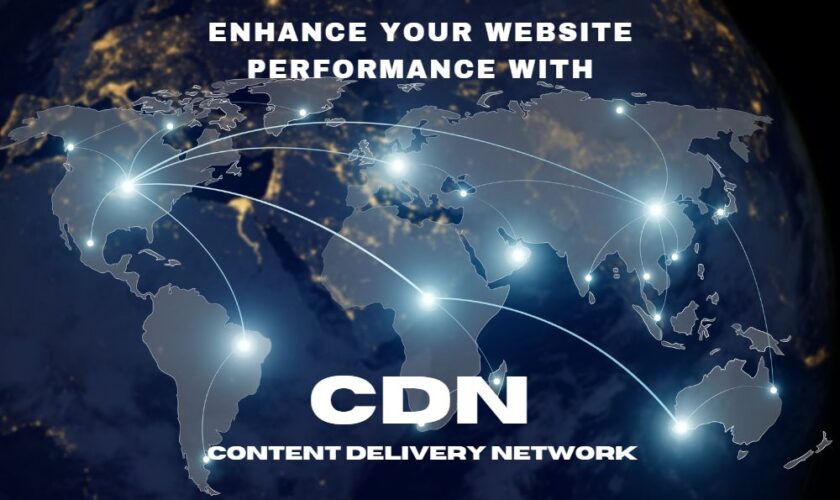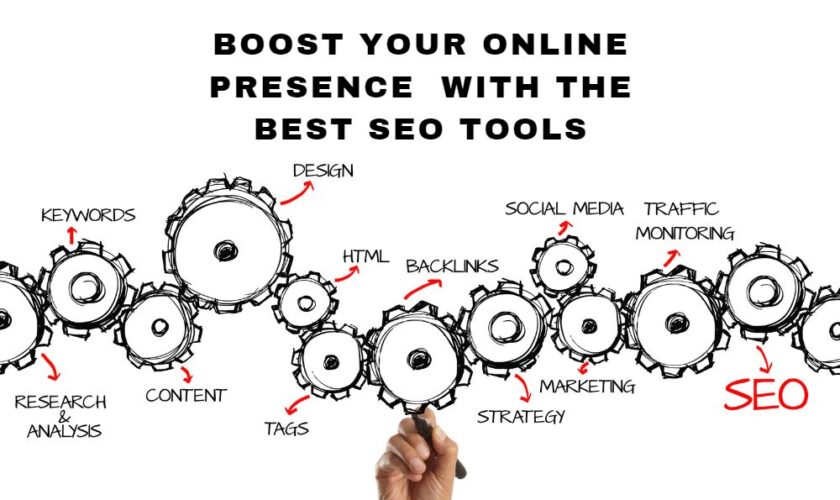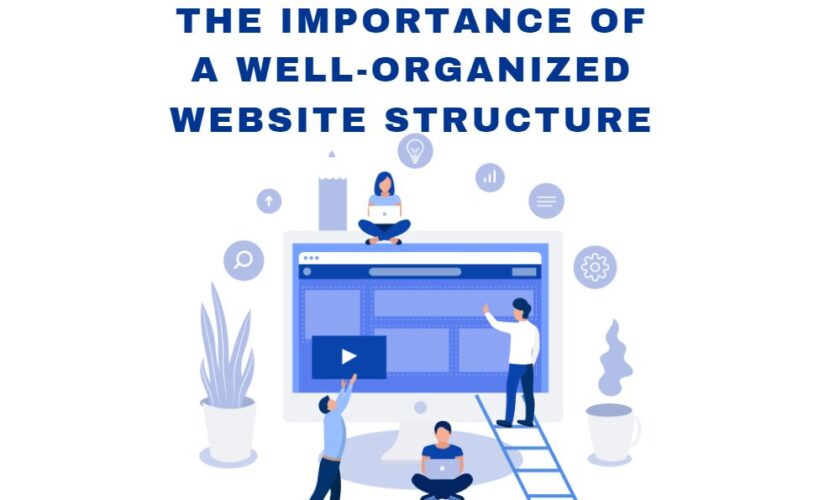Search Engine Optimization (SEO) is an integral element of contemporary digital marketing strategies. Nevertheless, optimizing the power of SEO necessitates the comprehension of how to measure its performance effectively. Without this understanding, your attempts might go unnoticed or, worse, be misdirected.
In this comprehensive guide, we shall delve into the world of SEO performance measurement, offering you the tools and knowledge to track your SEO endeavors accurately and tailor your approach for maximum impact. your strategy for optimal impact.
Table of Contents
1. Understanding the Importance of Measuring SEO Performance
It is imperative to comprehend the significance of measuring SEO performance before delving into its specifics. Doing so helps us understand the effectiveness of our SEO strategies and identify areas for improvement. In a business or academic setting, measuring SEO performance is a critical aspect of determining the success of our digital marketing efforts. It enables us to gauge our online presence, optimize our website for search engines, and maintain a competitive edge in the digital landscape. Therefore, understanding the importance of measuring SEO performance is paramount for any business or academic institution seeking to establish a robust online presence and attract more traffic to their website.
1.1. Assessing ROI
Investing time, effort, and resources in search engine optimization (SEO) is a significant and ongoing commitment for any business. As such, it is essential to be able to determine if these investments are yielding positive results. Accurate measurement of SEO performance is crucial for businesses to assess their Return on Investment (ROI) and ensure that their SEO strategy is truly contributing to their growth. By analyzing various metrics, businesses can gain valuable insights into the effectiveness of their SEO efforts and make informed decisions to optimize their SEO strategy.
1.2. Guiding Strategy Adjustments
The process of monitoring one’s Search Engine Optimization (SEO) performance is critical for both validating past efforts and guiding future strategies. By carefully analyzing data on SEO performance, businesses can garner valuable insights on what is working well and where there is room for improvement. This information can be used to adjust SEO strategies and improve overall results. It is important to note that analyzing SEO performance data is a continuous and ongoing process that requires diligence and attention to detail. By applying these insights, businesses can stay competitive and remain at the forefront of their industry.
1.3. Scaling Success
The ability to measure a phenomenon is often the first step towards improving it. This concept applies to Search Engine Optimization (SEO) as well. Accurate measurement of SEO performance can provide valuable insights that can be used to scale successful efforts, leading to exponential business growth. Therefore, it is important to develop a robust measurement framework that can track key metrics and provide meaningful analysis. By doing so, businesses can leverage data-driven insights to optimize their SEO strategies and stay ahead of the competition.
2. Critical Metrics for Measuring SEO Performance
Now that we understand the importance of measuring SEO performance, let’s discuss the essential metrics you should be tracking.
2.1. Organic Traffic
The volume of organic traffic is an essential measure of the efficacy of search engine optimization (SEO). This metric refers to all non-paid clicks generated through search engines. An upward trajectory in organic traffic is typically indicative of a well-executed SEO strategy.
2.2. Keyword Rankings
Organic traffic is a crucial metric for evaluating the effectiveness of your efforts to optimize your website for search engines. However, tracking the ranking of your targeted keywords in the Search Engine Result Pages (SERPs) can offer additional valuable insights into your SEO performance. By monitoring the position of specific keywords, you can gain a deeper understanding of how your website is performing in search engine results and identify areas for improvement. Therefore, tracking keyword rankings is an essential practice for businesses that wish to improve their online visibility and attract more visitors to their website.
2.3. SERP Visibility
Achieving high visibility in search engine result pages (SERPs) is crucial for a successful search engine optimization (SEO) strategy. SERP visibility score is a metric that measures the percentage of searchers who view your website in the search results for relevant queries. A high SERP visibility score can significantly enhance brand exposure and engagement. Therefore, businesses need to focus on improving their SERP visibility score to ensure their website is easily discoverable by potential customers.
2.4. Click-Through Rate (CTR)
Click-through rate (CTR) is a metric used to measure the percentage of search engine users who click on your website after locating it on the Search Engine Results Pages (SERPs). A higher CTR is an indicator of the effectiveness of your website’s title tags and meta descriptions. A well-crafted title tag and meta description that is relevant and persuasive has a higher likelihood of compelling searchers to click and visit your site. Therefore, maintaining a high CTR is crucial to achieving online visibility and driving traffic to your website.
2.5. Bounce Rate
The bounce rate metric is a valuable tool for assessing the relevance and quality of your content and website. This metric measures the percentage of visitors who leave your site after viewing only one page. A low bounce rate indicates that visitors find your content valuable and are motivated to explore more of your website. By analyzing the bounce rate, you can gain insights into the effectiveness of your content and identify areas for improvement. A high bounce rate, on the other hand, could suggest that your content is not engaging or relevant to your target audience. Therefore, it is crucial to monitor and optimize this metric to enhance the user experience and achieve business objectives.
2.6. Conversion Rate
The ultimate objective of Search Engine Optimization (SEO) is to drive conversions, which can include product purchases, newsletter sign-ups, or other desired actions. Keeping track of your conversion rate enables you to evaluate the effectiveness of your SEO strategy in driving these valuable actions. It is imperative to analyze the conversion rate regularly to determine whether the implemented SEO tactics are yielding the expected results. By doing so, you can identify areas that require improvement, and adjust your SEO strategy accordingly.
3. Advanced Metrics for SEO Performance Measurement
While the metrics discussed above provide a robust foundation for measuring SEO performance, there are several advanced metrics that can offer deeper insights.
3.1. Backlinks
In the realm of Search Engine Optimization (SEO), backlinks, also known as inbound links, play a crucial role in determining website rankings. By keeping track of the number and quality of inbound links directed toward your website, you can effectively evaluate the efficacy of your link-building efforts. This information can be invaluable in optimizing your website and enhancing its visibility on search engines.
Learn more about mastering the art of link-building
3.2. Time Spent on Page
This metric gauges the mean duration of time that website visitors spend on individual pages. A higher average page time is indicative of compelling, high-quality content that retains visitors on your site. To maintain engagement and promote visitor retention, it is crucial to monitor this metric and optimize content accordingly.
3.3. Page Speed
The speed at which your website pages load can have a significant impact on both your search engine optimization (SEO) rankings and the user experience. Slow-loading pages can result in higher bounce rates and reduced overall engagement. Thus, monitoring and optimizing your page speed is vital for achieving SEO success. It is important to use formal language, avoid contractions and ensure that the text is clear, concise, and free of errors in order to convey a sense of professionalism and expertise.
3.4. SEO-Sourced Revenue
One of the most crucial metrics to monitor in the field of SEO is the revenue generated from your efforts. By accurately measuring the revenue that is derived from your SEO strategy, you can determine the direct financial impact it has on your bottom line. This assessment is essential in determining the effectiveness of your SEO strategy and its contribution to your overall business success.
4. Tools for Measuring SEO Performance
When it comes to measuring SEO performance, there are several tools at your disposal. Some of the most popular include:
4.1. Google Analytics
Google Analytics is a robust and influential tool for monitoring various Search Engine Optimization (SEO) metrics, such as organic traffic, bounce rate, and conversions. Its functionality provides an all-encompassing understanding of your website’s performance and user behavior, thereby facilitating the optimization of your website’s ranking on search engines. With Google Analytics, you can analyze critical data to make informed decisions, identify areas that require improvement, and devise strategies to enhance your website’s overall performance.
4.2. Google Search Console
Google Search Console is an invaluable tool for monitoring the visibility of your website in Google search results. It provides an array of data that allows you to track your keyword rankings, as well as your click-through rate (CTR) and impressions. By utilizing this data, you can gain insights into how your website is performing, which can help you optimize your online presence and improve your search engine rankings. As such, Google Search Console is a must-have tool for any business or academic setting that is looking to enhance their digital marketing strategy.
4.3. SEMRush
SEMRush is an all-inclusive SEO tool that proffers an array of features for monitoring SEO performance. It furnishes data on keyword rankings, organic traffic, backlinks, and other essential metrics. SEMRush is an invaluable resource that enables businesses and marketers to track their SEO progress and identify areas for improvement.
4.4. Moz
Moz is a highly regarded SEO tool that provides valuable insights into keyword rankings, backlinks, and on-page SEO performance. In addition to these features, Moz offers a unique metric known as “Domain Authority”, which provides an assessment of the overall SEO strength of your website. This metric is based on a combination of factors, including the quality and quantity of inbound links, the relevance of the content, and other key SEO indicators. With its powerful suite of features and intuitive interface, Moz is an essential tool for businesses and professionals who are serious about optimizing their online presence and driving more traffic to their website.
5. The Timeline for SEO Results
Search engine optimization (SEO) is a widely used digital marketing strategy. A question that frequently arises among businesses and marketers is, “What is the average time it takes for SEO efforts to deliver results?” The answer is not straightforward, as the outcome can vary depending on several factors. However, it is reasonable to expect some progress in your SEO metrics within two to three months of implementing your SEO strategy. Nevertheless, a significant boost in organic traffic and conversions may take six to twelve months or longer.
It is important to note that SEO is a long-term strategy, and patience is key. The outcomes of your SEO efforts may not be immediate, but they can lead to long-lasting and sustainable growth. Consistency in your approach can help you achieve your goals and make the most out of your SEO efforts.
6. Conclusion
The measurement of Search Engine Optimization (SEO) performance is an essential component of a successful SEO strategy. By tracking relevant metrics and utilizing appropriate tools, valuable insights can be gained into the effectiveness of SEO efforts. Subsequently, the strategy can be adjusted to achieve better results and increase traffic and conversions for the business. It is worth noting that measuring SEO performance is crucial to improve it. Therefore, starting the measurement of SEO performance today can prove to be beneficial.















